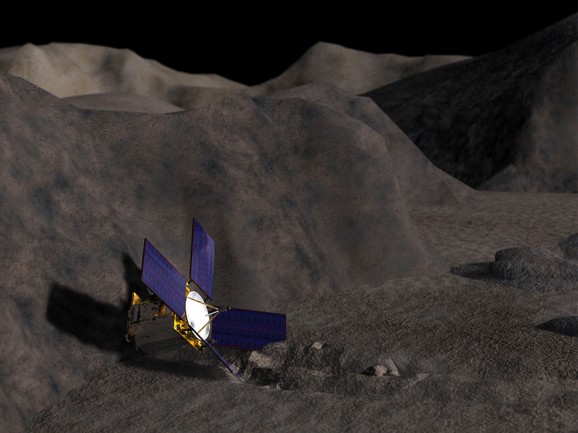Humans Have Landed Spacecraft On These Seven Celestial Bodies
This article is more than 2 years old

Asteroid 433 Eros (2001)
NASA’s Near Earth Asteroid Rendezvous Shoemaker (NEAR-Shoemaker) landed on asteroid 433 Eros on February 12, 2001. The probe studied Eros in orbit for a year—the asteroid is in orbit around Mars—then circled the asteroid a few times before touching down. The craft, which blasted off atop a souped-up Delta II launch vehicle, provided information on the composition of asteroids, and helped solidify their place in space exploration interests, particularly when it comes to mining. 433 Eros is the second biggest near-Earth asteroid ever identified. Scientists have kept their eyes on it for signs of potential impact with Earth that could have fairly massive results—it’s roughly the same size as the asteroid thought to have done away with the dinos, but nothing suggests it’ll be a problem for us anytime soon.
This mission was also the first one in which a craft performed a two-part burn to decrease its velocity and set it up for a gravity assist to help it match Eros’ orbit for landing. There was nearly a catastrophe with NEAR-Shoemaker when a thruster anomaly resulted in a loss of enormous quantities of propellant, as well as the craft entering safe mode. Mission control lost contact with it for an entire day, so insertion into Eros’ orbit was pretty dicey, but ultimately successful.
Titan (2005)
The Cassini spacecraft is pretty famous these days, largely for the stunning eye candy it consistently delivers in the form of photos of Saturn. But most people don’t know that Cassini comprised only half of that spacecraft. The other half was ESA’s Huygens, a probe carried to Titan by Cassini. Huygens and Cassini parted ways on December 25, 2004 (I hope it got overtime pay for working on Christmas). A few weeks later, on January 14, 2005, it became the first craft to land on a body in the Outer Solar System, Saturn’s moon Titan.
The probe obtained measurements about the moon’s atmosphere, surface, and winds, and took pictures that suggested there’s liquid on Titan. Huygens landed on a floodplain and transmitted data for 90 minutes. While Voyager 1 and 2 have traveled farther, Huygens has achieved the most distant landing of any spacecraft.
Pages [ 1 2 3 4 ]












